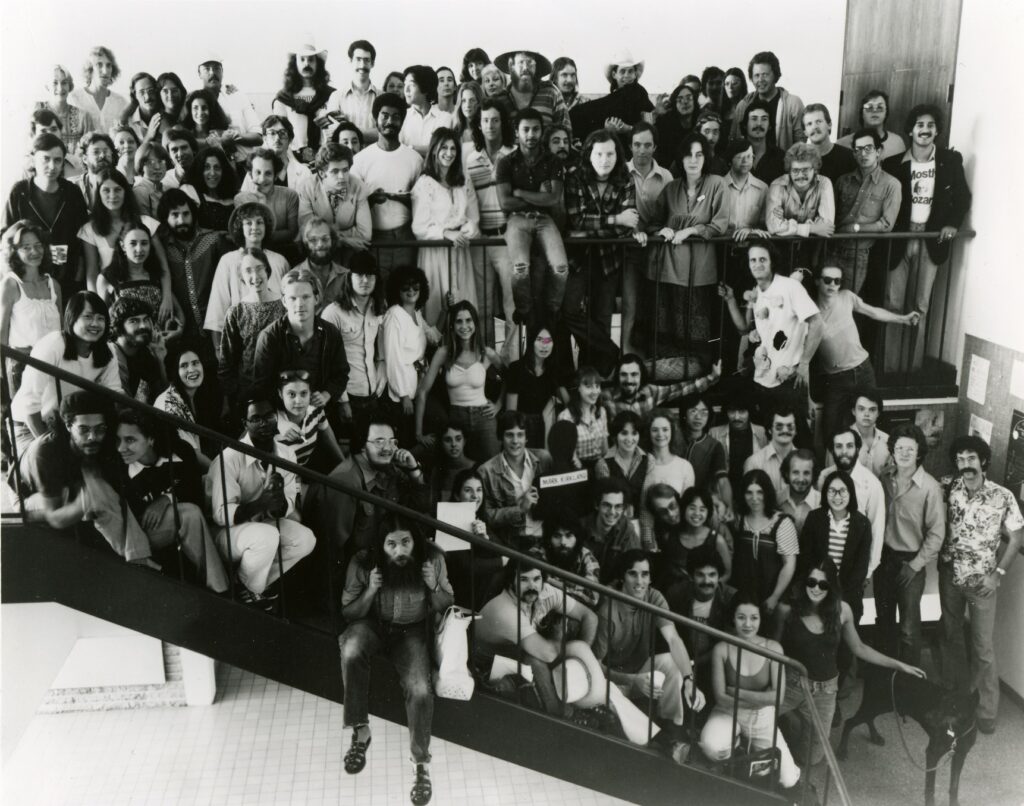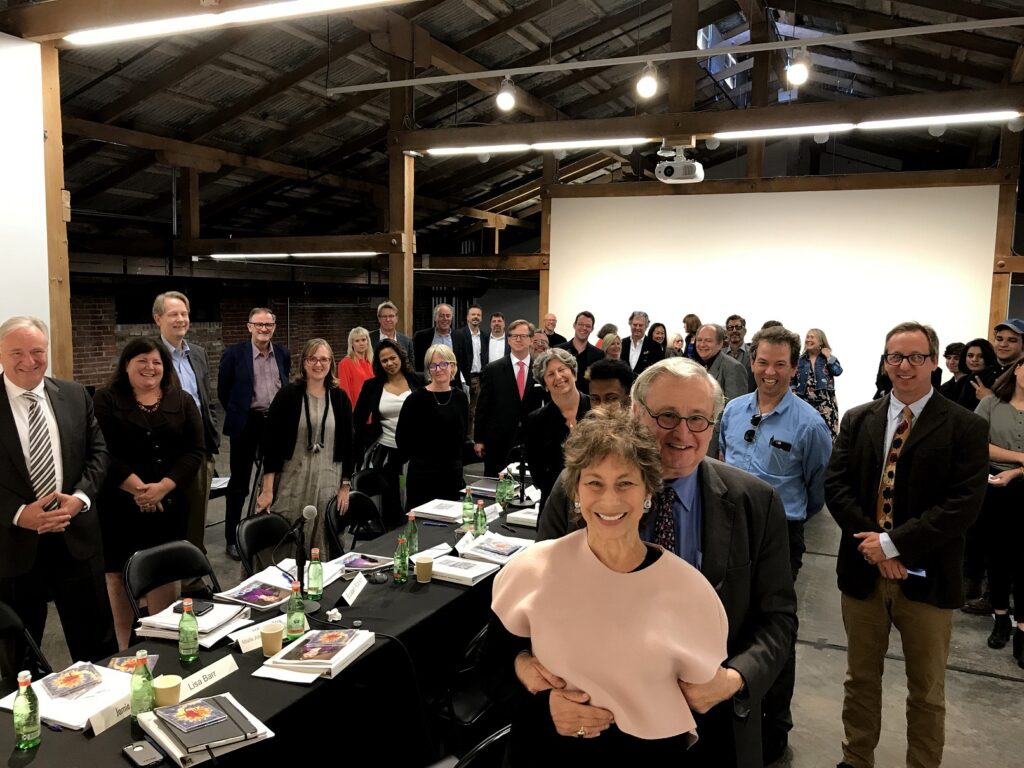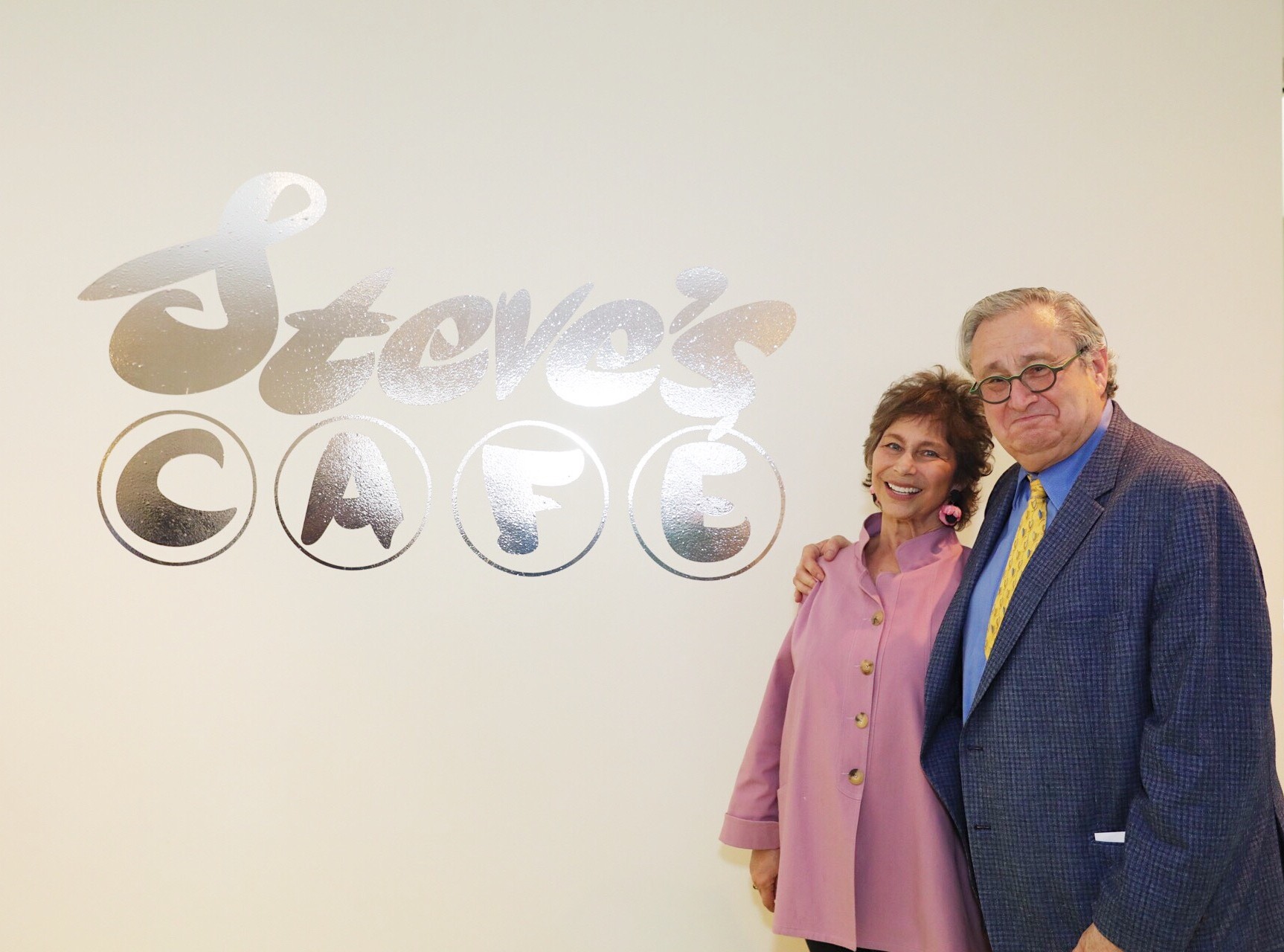The Art Collector was privileged to be able to ask Dr. Lavine several questions surrounding the publication of a book on his life’s works, titled Steven D. Lavine — Failure Is What It’s All About in an interview which we have split into two parts. Read part one here.
How is the theory of Gesamtkunstwerk (“total artwork”) incorporated into CalArts today? How will Covid affect this ideology?
What a terrific question! I rarely heard the term used during my time at CalArts, but the underlying idea of the gesamtkunstwerk was never far from the surface; with all the tools and talents of all the arts readily at hand and interdisciplinarity one of the hallmarks of CalArts, the temptation to integrate multiple arts is powerful. The gravitation of all the arts toward digital media has undoubtedly made the pull to combine the arts stronger still, or at least, in some ways, easier to achieve. As I think back, this effort to integrate the forces of all the arts produced much of the best work I saw during my years at CalArts. This was especially true of the professional work produced through the Center for New Performance, but also true of work by truly committed students willing to put two or three years into a single ambitious work.
It is too soon to say how Covid will affect interdisciplinarity at CalArts. But from the online work I have seen both from CalArts and more generally during these past months, it looks as if Covid is simultaneously giving artists the experience of working on their own and generating a pent up hunger to work with others. I expect that once we are beyond this plague, the hunger to combine the arts will reemerge in full force at CalArts.
How will the effects of Covid affect the arts?
The main impacts are likely to be more institutional than artistic, though over time the one inevitably affects the other. Virtually every arts organization sustained crippling financial losses in 2020, and these losses are likely to continue well into 2021. These losses have led organizations to radically reduce the size of their staffs and to restructure how they work. I think these organizations will be very cautious as they build back up, in part because of the pain of having had to restructure, in part because of worry about how and when audiences will return, and in part because of the uncertainty of future philanthropy, especially in light of the many societal deficits and needs revealed by the pandemic.
Certainly, more institutional programming and more professional conferencing will move online with the realization that online you can reach more people more economically and also because there are now individuals on staff with experience in online programming. This past year curators and programmers have had to base their judgments on seeing work online rather than in person. I expect that experience will lead to somewhat less buzzing around, especially as more and more individuals and organizations realize they must join the fight against global warming and the further destruction of the environments in which we live. The chief counter to these trends will be the demands of patrons with the resources to live as they choose for many of whom privileged personal interactions are part of the reason for supporting the arts.
It is always dangerous to predict what will happen in the arts. However, most artists live on long arcs of personal, artistic, and intellectual development, so I would expect many artists to pick up more or less where they left off in March of 2020, with the lessons of the pandemic only slowly entering their work. I hope we will see a new understanding of the fragility of our lives emerge in the arts, but who knows. One change of which I am more certain is that artists, having been cut off from their audiences during the pandemic are going to want to interact with those audiences in new and more intensive and extensive ways. The hope of overcoming some of the radical social and economic divisions wracking the United States, Europe, and most of the world may also feed into this desire by artists to draw close to their audiences.
Can you tell us about some of your work as the Chair of the Los Advisory Council for the Thomas Mann House in Los Angeles?
Shortly after I stepped down at CalArts in May of 2017, I was recruited as Founding Director and Chair of the American Advisory Council of the Thomas Mann House, then newly purchased by the German government to save the home of Germany’s most significant 20th-century writer from being torn down. Their intention was to establish the House as a meeting place for serious thinkers from Germany and the United States to meet and exchange ideas about the most pressing issues of our time, especially the future of liberal democracy.
Thomas Mann built and then lived in this home in the Pacific Palisades neighborhood of Los Angeles from 1942 to 1952, in exile from Nazi Germany about the virtues of democracy. His home became a meeting place for the many brilliant German emigres who had sought safety in the United States, Schoenberg, Adorno, Brecht, and Feuchtwanger among them and, indeed, much of the early thinking about the future of Germany after the defeat of the Nazis took place there. It made sense then that the House become a meeting place where the most exciting thinkers from Germany concerned with urgent contemporary issues could spend time in residence and exchange ideas with their American counterparts. The cornerstone programs, when we could still do programs in person, were both long term and shorter term residencies for scholars and intellectuals from Germany, during which time they interact with their American peers as well as American audiences; seminars and conferences on contemporary issues; and public programs, both online and in-person on contemporary issues.
The American Advisory Council’s role is to bring fresh thinking and connections from the United States in coordination with the Board and advisory panels in Germany. As Chair of the American Advisory Council, my role is to recruit and convene this panel and, more generally, to serve as senior American consultant to the Thomas Mann House’s leadership both in Germany and at the House itself. Friends ask me how I could turn so happily to these political, social, and economic issues. My reply is that at CalArts, I thought of my work as supporting and educating strong voices from every corner of American society and internationally, in the hopes that if they all could use their artistic abilities to be heard, they would contribute to the building of a more equal and just society.

Where did you find the connect between entrepreneurship and Philanthropy?
I am skeptical about the current overly enthusiastic embrace and promotion of entrepreneurship as the cure for all kinds of ills. This is not to say that there isn’t a role for social and artistic entrepreneurship. In truth, every independent artist and not-for-profit arts organization must be entrepreneurial on their own behalf. But the financial success of Silicon Valley entrepreneurship and marketing Silicon Valley firms undertake to spread their influence has promoted the idea that every kind of problem can be solved by entrepreneurship.
There are issues that only government can effectively address. Certainly, the Covid-19 pandemic has taught us that if it was not already obvious. And what is true generally for societies is also true for the arts. There are forms—opera, symphonies, museums— that will never be self-supporting, and will always require governmental and philanthropic support to flourish. This is equally true for independent artists, with only a very few reaching a level of sales sufficient to be self-supporting. And I should add this is also true for colleges and universities and all levels of schooling. These are all arenas in which just barely good enough will never be adequate. Indeed, I would argue that one of the defining characteristics of art is that it is better than it has to be or, to put this differently, just good enough is never good enough.
You ask about philanthropy as well. With governments retreating from taking responsibility for their citizens’ welfare, the need for philanthropy is growing exponentially. This is true both for direct support that helps fill the gaps left in current social welfare systems (which I construe as including the arts and education) and support policy and social innovation. Philanthropy can never completely fill the role governments need to play, but they can help. Here philanthropy and entrepreneurship come together, because there is always a need to invent better ways of accomplishing things. In the past, foundations and individual donors liked sponsoring new initiatives but tended to want a virtual guarantee of success. The Silicon Valley pattern of many failures surrounding a few major may influence philanthropies to invest in more entrepreneurial start-up efforts. I hope so. The federal government and corporate America is currently under-investing in experiments and discovery that could help shape a better future.




 Saving...
Saving...
1 Comment
Add Yours[…] Read part two here. […]